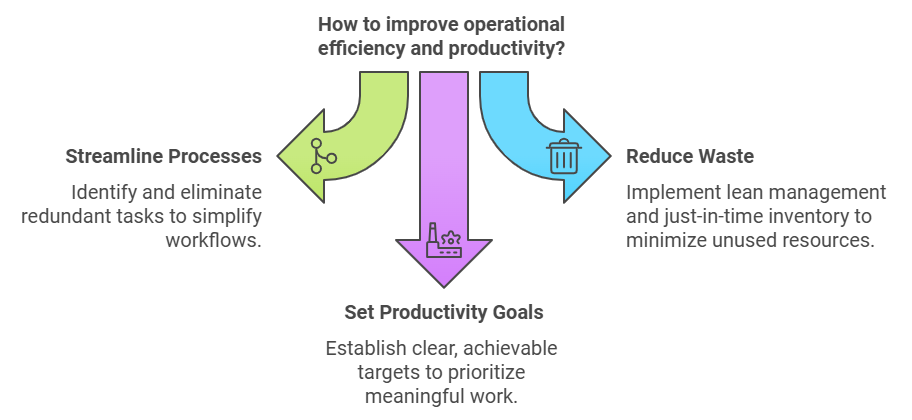
Setting Clear and Measurable Objectives
Setting clear and measurable objectives is essential to achieving business goals for success. When you define specific targets, you give your team direction and purpose. Clear objectives help you align daily activities with your broader vision, ensuring everyone works toward a common outcome. Without measurable goals, it’s challenging to track progress or know when you’ve achieved your target. Setting objectives that are both specific and measurable allows you to see real growth and adjust strategies as needed.
To set achievable targets, focus on creating goals that are realistic and time-bound. Breaking down larger goals into smaller, manageable steps can help keep momentum steady. For instance, instead of setting a vague goal like “increase sales,” aim to “increase sales by 10% within six months.” This approach provides a defined timeframe and a measurable result, making it easier to assess progress. Specific, time-bound goals also help teams stay motivated, as they have clear milestones to reach.
Regularly reviewing your objectives keeps you aligned with your overall vision. As market conditions or business needs change, you can adjust your targets accordingly. By setting clear and measurable goals, you create a roadmap for success, helping your business grow consistently and stay focused on what matters.
Financial Goals and Revenue Growth
Financial goals and revenue growth are central to achieving business goals for success. Setting revenue targets provides a clear path to growth, helping you measure progress and adapt strategies. Revenue goals can be monthly, quarterly, or annual, depending on your business cycle. By setting specific financial targets, you can focus your efforts on activities that drive sales and improve profitability.
Cost management is equally important in supporting financial stability. Reducing unnecessary expenses and optimizing resources keeps your business lean and efficient. Reviewing expenses regularly can help you identify areas where adjustments can increase savings. For example, renegotiating supplier contracts or adopting cost-effective technology can lead to significant improvements in your bottom line. Effective cost management also frees up resources, allowing you to invest in growth-oriented initiatives.
Profitability goals keep you focused on creating long-term financial health, not just short-term gains. Tracking profitability ratios helps you understand how well your business converts revenue into profit. As you grow, maintaining or improving profitability shows that your business is sustainable. Achieving these financial goals builds a strong foundation, allowing your business to thrive and stay adaptable in a changing market.
Operational Efficiency and Productivity
Operational efficiency and productivity are essential business goals for success, as they allow you to maximize resources and minimize waste. Setting goals to streamline processes helps your team work more effectively, saving time and reducing costs. For example, analyzing workflows can identify areas where tasks are duplicated or unnecessary, allowing you to simplify them. By eliminating redundant steps, you create a smoother process that lets employees focus on high-impact activities.
Reducing waste is another key area for operational efficiency. Waste comes in many forms, including unused materials, excess inventory, and time spent on low-value tasks. Goals to reduce these types of waste can significantly improve your bottom line. Techniques like lean management and just-in-time inventory help you use resources only when needed. These practices lower costs and increase flexibility, enabling your business to adapt quickly to changing demands.
Productivity goals, meanwhile, encourage teams to deliver more in less time. By setting clear, achievable productivity targets, you help employees prioritize their efforts toward meaningful work. Regularly reviewing these goals ensures they remain relevant as your business evolves. With strong operational efficiency and productivity goals in place, you create a resilient, agile operation that supports both growth and profitability.
Customer Satisfaction and Retention Goals
Customer satisfaction and retention goals are key business goals for success, as they directly impact long-term growth. When customers are satisfied, they are more likely to return, helping you build a loyal customer base. Satisfaction often comes from meeting or exceeding expectations in product quality, service, and experience. Setting specific goals for customer satisfaction helps your team focus on providing value that keeps customers engaged.
Loyalty programs play an essential role in improving retention. By rewarding repeat customers, you create a sense of appreciation and encourage continued business. Loyalty programs can offer discounts, exclusive offers, or points that build toward future purchases. These incentives make customers feel valued and give them a reason to choose your brand over competitors. A well-designed loyalty program not only boosts retention but also increases customer lifetime value, contributing to revenue growth.
Customer feedback is another powerful tool for understanding satisfaction and identifying areas for improvement. Regularly gathering feedback allows you to address issues before they impact customer loyalty. By acting on feedback, you show customers that their opinions matter, further strengthening their trust. Setting goals around satisfaction, retention, and loyalty ensures your business remains customer-focused, building strong relationships that support lasting success.
Employee Engagement and Development
Employee engagement and development are essential business goals for success, as they directly impact productivity, morale, and overall performance. When employees feel satisfied and supported, they are more motivated and dedicated to their roles. Setting clear goals for employee satisfaction allows you to identify areas that need improvement, such as work-life balance, benefits, or recognition programs. A satisfied workforce contributes to a positive workplace culture, which ultimately drives better results.
Training and development goals are also crucial for maintaining a skilled workforce. Investing in regular training ensures your team stays up-to-date with industry changes and best practices. Development opportunities, such as workshops or mentorship programs, enable employees to advance their skills and grow within their roles. This commitment to learning benefits both employees and the company by increasing productivity and reducing turnover. When employees have a path for growth, they are more likely to stay engaged and committed.
Regular feedback and open communication are key in supporting engagement and development. By providing constructive feedback and recognizing achievements, you build trust and reinforce a sense of purpose among your team. Setting and maintaining goals for engagement and development helps foster a dedicated and skilled workforce that drives your business forward. A motivated team is an invaluable asset that directly contributes to long-term business success.
Market Expansion and Brand Awareness
Market expansion and brand awareness are important business goals for success, helping you reach new customers and strengthen your position. Setting goals to enter new markets can increase revenue streams and diversify your customer base. You might focus on expanding geographically or targeting a new demographic that aligns with your offerings. By researching the needs and preferences of potential markets, you can tailor your approach to maximize impact and relevance.
Brand awareness goals play a key role in building a lasting presence in these markets. When more people recognize and trust your brand, they are more likely to choose your products or services. Strategies to increase awareness could include social media campaigns, partnerships, or content marketing that highlights your unique value. Consistent messaging and visibility help establish a strong brand identity, which is essential for long-term customer loyalty.
Increasing brand presence goes beyond just reaching customers; it also involves engaging them effectively. Offering valuable content or customer experiences can deepen connections with your audience and encourage them to share your brand with others. With focused goals on market expansion and brand awareness, you create opportunities for sustained growth, broadening your influence and ensuring a steady flow of new customers.
Conclusion
Establishing clear business goals for success provides a roadmap for growth and sustainability. By focusing on key areas like customer retention, employee engagement, and operational efficiency, you set a solid foundation for long-term success. Each goal aligns your team’s efforts and resources, making it easier to track progress and adapt when needed.
Regularly reviewing and adjusting your goals keeps your business agile and responsive to market changes. Whether you’re aiming to expand your brand or increase productivity, clear objectives guide your actions. Setting and achieving these goals helps you build a resilient business that can thrive in any environment.


